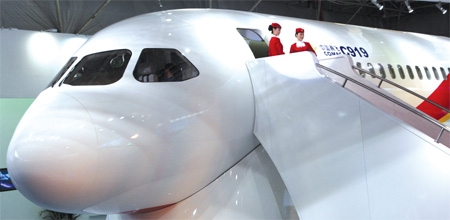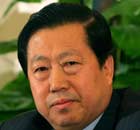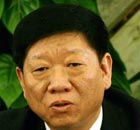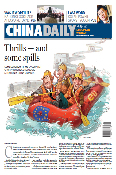Creating a balancing act in 3E
Updated: 2010-01-12 07:47
By Zhang Monan (China Daily)
The global economy that is just emerging from an unprecedented recession in decades is expected to start a journey in the new year toward resurgence and structural re-adjustment.
But the annual 3 percent growth rate average in global energy consumption over the past 100 years should dampen the prospect of the much-needed global economic restructuring. Due to the vast spending of carbon energy - which has aggravated the greenhouse effect and deteriorated the environment and the global ecosystem - the world is now at the risk of a bigger energy and environmental crisis.
Creating a sustainable economic and energy system while steering toward the establishment of a 3E model - known as the coordinated development between the economy, energy and environment - poses an enormous challenge for the world to deal with during a crisis that is likely to worsen. In this sense, the latest round in the global economic crisis is not only the outcome of a regular world economic cycle, but also means the global economy is now in a new period of "reforming its industrial civilizations".
In the wake of the world's two energy crises in the 1970s that crushed the Japanese economy, Tokyo has sped up plans on how it spends its energy, outlined plans for sustainable development of its enterprises under the framework of the Kyoto Protocol, and begun a strategy of diversifying its energy development.
At the same time, a new national energy strategy was drafted to help the country switch from the heavy use of exhaustible high-carbon energy to developing cleaner low-carbon energy. The strategy will also guide Japan away from excessive dependence on conventional energy to exploring technological innovations in new energy. To facilitate the process, Japan adopted a plan to improve its energy efficiency by 30 percent by the year 2030. The successful transformation of its 3E model has become a driving factor for the country to establish a new economic development pattern.
As the world's third largest economy that has suffered a near identical dilemma in its economic development, China should learn from Japan's experiences.
In the post-financial crisis, nations will be in furious competition to adjust to and develop a low-carbon economy as soon as possible. With its quick development largely dependent on an extensive basis and the heavy use of energy and resources, China should move quickly to restructure and adjust its unevenly built energy structure to push for the transformation of the economy into an ideal 3E model.
But the fact is that the country has not performed very well in coordinating development between its energy, environment and economy. The efficiency of the country's overall energy use is now about 33 percent, 10 percentage points lower than developed countries. Also, China's energy consumption per unit of the gross domestic product (GDP) value is more than two times the world average. The country's coal-dominated energy structure dictates that large volumes of its carbon waste as well as water and solid pollutants that are byproducts of energy production and use will worsen the quality of its deteriorating environment.

The country's economic development and its energy production and use have also not advanced hand in hand. This is reflected in its energy consumption long exceeding its GDP growth pace as well as the occasional electricity and coal shortages.
Despite enjoying a development boom in the past decades, China has failed to wean itself from its overall industrial development of a low efficiency, high-energy consumption. Worse, the country's current energy pricing mechanism will encourage domestic enterprises to invest in low-efficient and energy-intensive industrial equipments and technologies, which would throw a wrench into the nation's need for adjustments to its industrial structure.
It is estimated that pollution of the environment in China, as the result of its uneven energy structure, has caused a 2-3 percent loss of GDP. China's long-established industries structure, dominated by coal-fueling heavy industries, show that its current energy consumption model is difficult to change in a short period of time.
Recently, China drafted a long-term plan on reducing carbon emissions, committing to a 40-45 percent cut in the country's carbon dioxide emissions per unit of GDP by 2020. To attain the target, the country should hasten the establishment of a new economic structure and provide policy guarantees that could better promote the coordinated development between its economy, energy and environment.
To this end, the country should take some effective measures to ensure its energy security, improve energy efficiency and actively develop new and renewable energy. That would help it speed up the construction of a sustainable energy system, balance the development between energy and economy, optimize its economic and energy structures and boost efficiency.
The country should also try to improve its current mechanism on the pay use of resources, as well as the eco-environment compensation system to set up a reasonable energy and resources pricing system.
At the same time, resource and environment taxes should be levied to make up for the losses caused by exploitation of energy and resources to the ecosystem. In addition, a green evaluation system to gauge energy consumption, eco-environment and economic growth should be established as early as possible to quickly establish the ideal 3E model.
The author is an economics researcher with the State Information Center.
(China Daily 01/12/2010 page8)
Paper's Digest

Chinese jet takes on Big 2
First large commercial plane set to ride on demand for aircraft as economy grows.
Super-CPU only for domestic eyes
Specials

Gaining ground
Doing business in china for westerners has come a long way, Peter batey says.

Safeguarding environment a priority
China continues to face mounting pressure to curb environmental degradation, despite progress in reducing pollution over the last five years, the environmental protection minister warned.

Employment to remain a continuing challenge
China's top labor official said the country will face a tough employment situation in the next five years.




